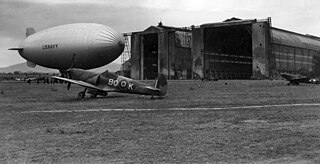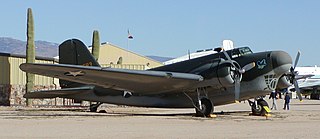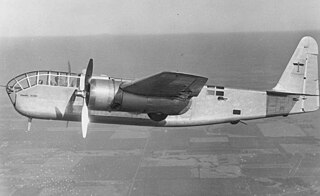
The Desert Air Force (DAF), also known chronologically as Air Headquarters Western Desert, Air Headquarters Libya, the Western Desert Air Force, and the First Tactical Air Force (1TAF), was an Allied tactical air force created from No. 204 Group RAF under RAF Middle East Command in North Africa in 1941 to provide close air support to the British Eighth Army against Axis forces. Throughout the Second World War, the DAF was made up of squadrons from the Royal Air Force (RAF), the South African Air Force (SAAF), the Royal Australian Air Force (RAAF), the United States Army Air Forces (USAAF) and other Allied air forces.

No. 3 Squadron is a Royal Australian Air Force (RAAF) fighter squadron, headquartered at RAAF Base Williamtown, near Newcastle, New South Wales. Established in 1916, it was one of four combat squadrons of the Australian Flying Corps during World War I, and operated on the Western Front in France before being disbanded in 1919. It was re-established as a permanent squadron of the RAAF in 1925, and during World War II operated in the Mediterranean Theatre. The Cold War years saw the squadron disbanded and re-raised twice. It was based at RAAF Butterworth during the Malayan Emergency and the Indonesia–Malaysia Konfrontasi. Equipped with McDonnell Douglas F/A-18 Hornet multi-role fighters from 1986, the squadron deployed to Diego Garcia in 2002 to provide local air defence, and the following year contributed aircraft and crews to the invasion of Iraq as part of Operation Falconer. In April 2016, it deployed to the Middle East as part of the military intervention against ISIL. The squadron began re-equipping with Lockheed Martin F-35 Lightning II multi-role fighters in 2018.

No. 451 Squadron was a Royal Australian Air Force army cooperation and fighter squadron of World War II. It was formed at Bankstown, New South Wales, on 12 February 1941 and began flying operations on 1 July as part of the North African Campaign in Egypt and Libya. No. 451 Squadron was withdrawn for refitting in early January 1942 and spent the remainder of the year performing garrison duties in Syria. In January 1943, it was transferred to Egypt to contribute to local air defence but saw almost no combat. This inactivity caused morale among the squadron's personnel to greatly deteriorate.

The 709th Airlift Squadron is part of the 512th Airlift Wing at Dover Air Force Base, Delaware.

The 73rd Special Operations Squadron is a unit of the United States Air Force, assigned to the 1st Special Operations Wing at Hurlburt Field, Florida. The squadron operates the AC-130J Ghostrider ground-attack aircraft in support of Air Force Special Operations Command.

The 25th Attack Group is an active United States Air Force unit, stationed at Shaw Air Force Base, South Carolina. It was activated in February 2018 as a geographically separate unit to operate unmanned aerial vehicles and is assigned to the 432d Wing, which is located at Creech Air Force Base, Nevada. As of 2020, the group manages five General Atomics MQ-9 Reaper attack squadrons, as well as the 25th Operations Support Squadron, which provides intelligence, weather, and administrative support.

The 512th Rescue Squadron is part of the 58th Special Operations Wing based at Kirtland Air Force Base, New Mexico. It formerly operated the Bell UH-1N Twin Huey and currently operates the Sikorsky HH-60G Pave Hawk and the new HH-60W Jolly Green II helicopters training aircrew conducting search and rescue missions.
Aguadulce Army Airfield is a former United States Army Air Forces World War II airfield in Panama used as part of the defense of the Panama Canal. It was closed on 1 March 1948.

The 35th Bombardment Squadron is an inactive United States Air Force unit. It was activated in January 1940 as the United States built up its armed forces prior to World War II. In the fall of 1941, it deployed to the Caribbean and, following the attack on Pearl Harbor engaged in antisubmarine patrols. Following the transfer of the land based antisubmarine mission to the Navy, and with the lessening of threats to the Panama Canal, the squadron returned to the United States, where it was disbanded in June 1944.

The 59th Bombardment Squadron is an inactive United States Air Force unit. It was first activated in Panama in 1941 during the expansion of the United States Army Air Corps before World War II. Following the Attack on Pearl Harbor the squadron participated in antisubmarine patrols in the Caribbean Sea and adjoining waters. When the United States Navy assumed this mission in 1943, the squadron moved to the United States and was disbanded.

The 417th Bombardment Squadron was a United States Army Air Forces unit. It was activated in the fall of 1939 as the 27th Reconnaissance Squadron and moved to Puerto Rico two months later. Following the attack on Pearl Harbor it engaged in antisubmarine patrols in the Caribbean until the antisubmarine mission was taken over by the Navy. In the spring of 1944, it returned to the United States, where it was disbanded on 20 June 1944.

The 512th Fighter Squadron is an inactive United States Air Force unit. Its last assignment was with the 86th Fighter Wing at Ramstein Air Base, Germany, where it was inactivated September 1994.

The Second Bombardment Wing, abbreviated as 2nd Bombardment Wing of the United States Army Air Forces is a disbanded unit whose last assignment was with the Continental Air Forces, based at McChord Field, Washington. It was last active in November 1945.

The 406th Air Expeditionary Group is the operational flying component of the 406th Air Expeditionary Wing. It is a provisional unit assigned to the United States Air Forces in Europe.

Grand Island Army Airfield was a United States Army Air Forces airfield which operated from 1942 to 1946. After its closure, the base was reopened as Central Nebraska Regional Airport.

The 376th Expeditionary Operations Group was a provisional United States Air Force Air Combat Command unit. It was stationed at the Transit Center at Manas International Airport, Kyrgyz Republic, up until 2014.

Pounds Army Air Field is a former United States Army Air Forces airfield, located 6 mi (9.7 km) west of Tyler, Texas. It was established in 1942 and assigned to Third Air Force. Its mission was the training of units, crews, and support individuals prior to their deployment to the combat theaters overseas. It was closed as an active military airfield on 31 January 1945 and was subsequently turned over to local civilian authorities. Today it remains in use by the city of Tyler as Tyler Pounds Regional Airport.

The 1st Proving Ground Group is a disbanded United States Army Air Forces unit. It was last active with the Army Air Forces Proving Ground Command, based at Eglin Field, Florida, where it was disbanded on 1 April 1944. The unit's personnel/equipment/mission was taken over by the 610th Army Air Forces Base Unit and 611th AAF Base Unit.

Royal Air Force Alconbury, or more simply RAF Alconbury, is an active Royal Air Force station near Huntingdon, England. The airfield is in the civil parish of The Stukeleys, close to the villages of Great Stukeley, Little Stukeley, and Alconbury. Flying operations are no longer based at the site, with most of the land, including the runway, having been sold in 2009 to become the new settlement of Alconbury Weald.
Yugoslav Army Outside the Homeland is the term for members of the Royal Yugoslav Army who managed to escape capture in the April War. This part of the Yugoslav Аrmy numbered about 980 to 1158 people, mostly members of the navy and air force, who were stationed in Egypt and the Middle East. Only this part of the army was under the direct command of the Yugoslav government-in-exile.

















